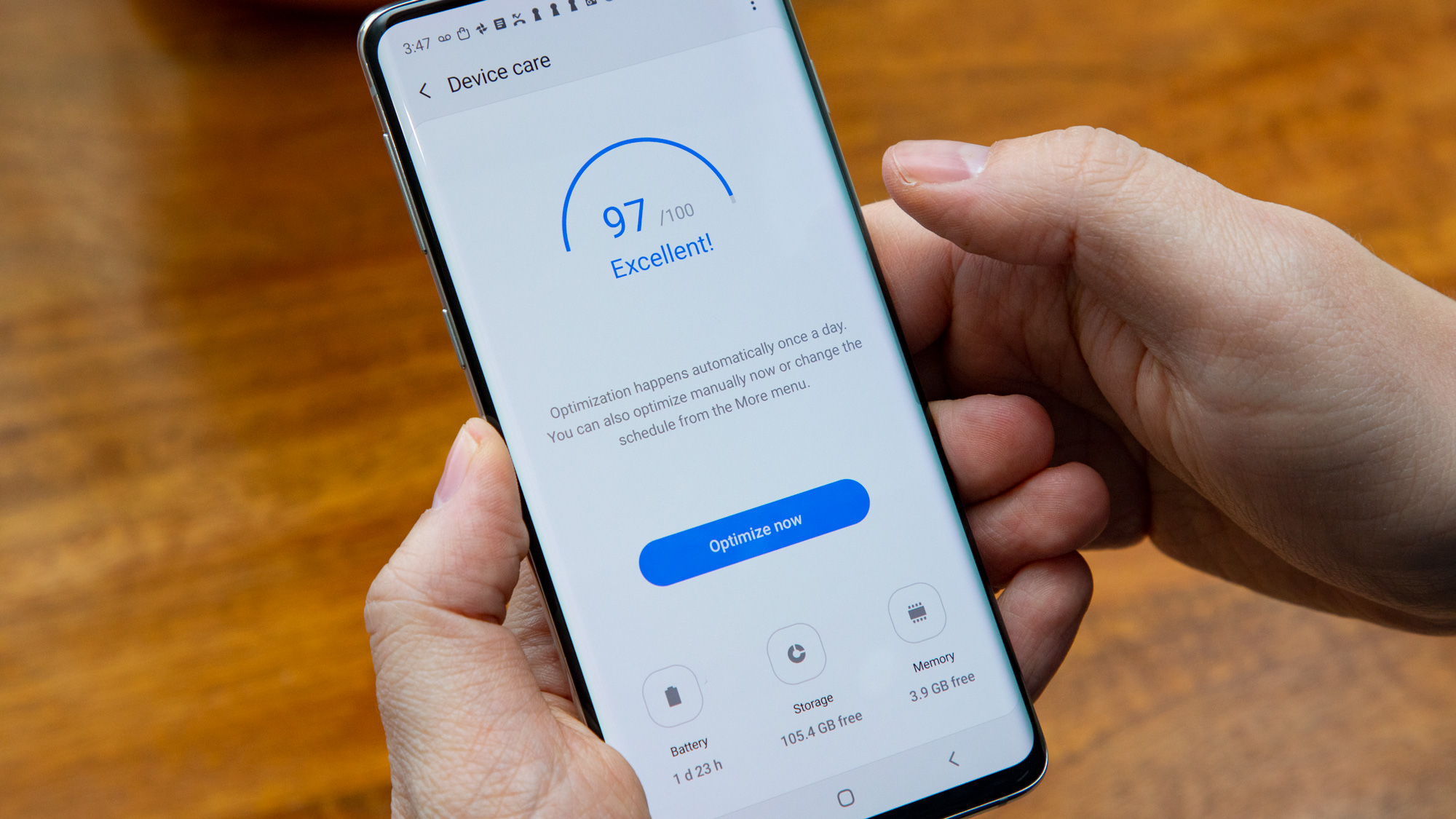Specs and performance
The Samsung Galaxy S10 gets proper under-the-hood upgrades, touting the new top-of-the-line Snapdragon or Exynos chipsets, depending on which country you live in.
It's plenty fast. The Qualcomm Snapdragon 855 chipset we benchmarked came back with a record-breaking multi-score speed... for Android. The iPhone XS is still a bit faster, but Samsung is very close at 11,002 to Apple's 11,481. This is the first time we can say this. The gap is usually a lot wider.

It also comes with 8GB of RAM – a serious upgrade over the 4GB of RAM in last year’s S9 – and includes options for 128GB or 512GB of internal storage. There’s no 64GB version to worry about here, and Samsung still supports expandable storage.
Also onboard is next-gen Wi-Fi 6, which will support seamless transition between Wi-Fi routers and is four times faster than 802.11ax. It should deliver a 20% speed boost, but you’ll need a new router to really get any use out of this feature.
What you won’t get on this phone is the S10 Plus and Note 9-exclusive vapor chamber cooling. If you’re a gamer, you may want to upgrade to the larger phone for more than just the bigger screen.
You're also going to miss out on Android Q for a while. Google's ongoing beta for the Pixel 3 and other phones doesn't include any Samsung phones and probably won't long after the final software launches in August. Samsung is notoriously slow to update its S phones to the next version of Android, sometimes taking a whole year to do so. By then, the Samsung Galaxy S11 will be out.

Battery life
The Samsung Galaxy S10 packs in a 3,400mAh battery, an upgrade over the 3,000mAh capacity of the Galaxy S9.
However, because of the increase in screen size, Samsung is still quoting the same "all-day" battery life for the S10 as it did for its predecessor, and we found this to be true.
We regularly got to the end of day with around 20% left in the tank, with our usage including a couple of hours of Spotify streaming, another two hours of video, a range of social messaging, an hour or two of gaming and a smattering of emails, web browsing and camera use throughout the day.
With more reserved use, it’s possible to get a day and a half from the Galaxy S10 before you have to considering finding a charger.

Running the TechRadar battery test, where we play a 90 minute full HD video with the screen at full brightness and accounts syncing over Wi-Fi in the background, the Galaxy S10 lost just 11%.
That’s the same result as the iPhone XS, and a marked improvement over the Galaxy S9 which dropped 17% in the same test. It means you’ll be able to knock back a couple of movies on the S10 and still have plenty of juice left in the tank.
The Galaxy S10 supports wireless charging, like the previous generation, but Samsung has added a new feature here too. It’s called Wireless PowerShare and allows you to use the Galaxy S10 as a wireless charging mat for your other wirelessly charging devices.
Any device which supports the Qi wireless charging standard can be charged by being placed on the rear of the S10, including the new Samsung Galaxy Buds as well as the most recent iPhones.
Charging speeds are slow, but if your friend is in desperate need of some power and there’s no charger in sight, you could potentially become even more popular.

